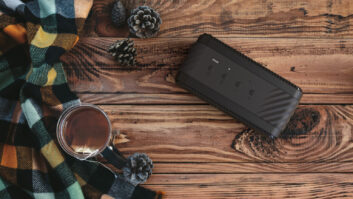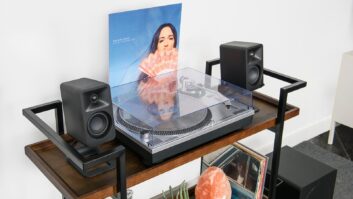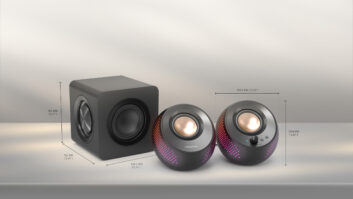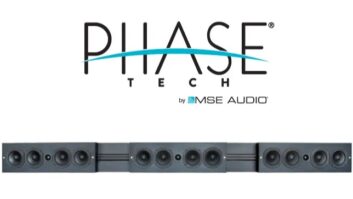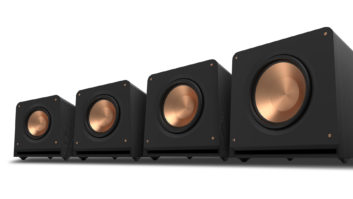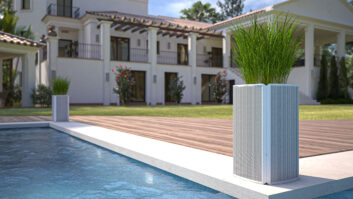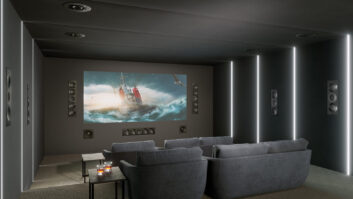Klipsch will one-up last year’s launch of 27 architectural speakers by unveiling 28 more models here at CEDIA Expo to leverage its brand awareness.
“We’re No. 1 in box speakers in dollars in all channels for the past year-and-a-half,” said product marketing director Jim Garrett, citing NPD statistics. “We’re rapidly taking custom market share,” he continued, because of the growing awareness of the Klipsch brand name. Awareness rocketed with the distribution of a box-speaker series targeted exclusively to Best Buy, he said. “People know us from the Best Buy flyers.”
“Installers are the brand only if you [the manufacturer] don’t have a brand,” he continued. Custom consumers will gravitate toward recognizable names because of their comfort level with them, he continued. “The majority of custom speakers are from unknown brands,” he noted.
The introductions will expand Klipsch’s custom selection to more than 40 SKUs from only about 14 a couple years ago. They will include the company’s first in-wall and in-ceiling surrounds, in-ceiling speakers with pivoting woofer and independently pivoting horn tweeter with flush grilles, and an expansion of pivoting woofers to all models but a quartet of contractor-series SKUs.
The company will also show its first THX-certified architectural speakers; its first square in-ceiling speakers, designed mainly for overseas markets; its highest end in-ceiling speaker; and its first back cans.
Key introductions here at the CEDIA Expo include:
- Klipsch’s first in-wall surround speaker, the flush-mount R-5650-S, with two vertically stacked horn tweeters pointing in opposite directions to deliver a 180-degree dispersion pattern. They shipped late August at a suggested $699 a pair;
- Its first back cans, which are made of metal and designed for states with rigorous fire codes and for condo complexes where installers want to reduce the intrusion of music from one living unit to another;
- CDT in-ceiling series, which features pivoting horn tweeter and independently pivoting woofer in all models but a model dedicated to surround-channel use. Previous Klipsch speakers featured only a pivoting tweeter.
“We’re the only ones doing [pivoting] with horn tweeters,” said Garrett. Horns focus high frequencies into the listening area to reduce the amount of energy wasted when typical tweeters partially fire into the ceiling itself, he said.
The woofers rotate 360 degrees and shift 15 degrees in any direction. The tweeter swivels up to 100 degrees.
The CDT series includes the company’s first in-ceiling surround, the CDT-2650-SC at $200 each. It features woofer and twin tweeters that move in tandem with the pivoting woofer.
The company’s highest priced in-ceiling speaker, the CDT-9800-C, is intended for home theaters at a suggested $999 a pair, exceeding the current top-end price of $750 a pair. The two-way 8-inch-round model features independently pivoting woofer and tweeter.
And Klipsch’s first THX-certified in-wall speakers, making the company the first to announce plans for THX Ultra II-certified architectural speakers. They’ll be displayed but won’t be launched until CES. A two-way LCR speaker will retail for a suggested $1,000 each, and a dedicated surround with dual tweeters will cost $750 each. THX certification is pending.
At January’s CES, the company will show off its first in-wall subwoofer, which will fit between standard two-by-four studs and can be retrofitted because its back box is the same height and width as the baffle.




